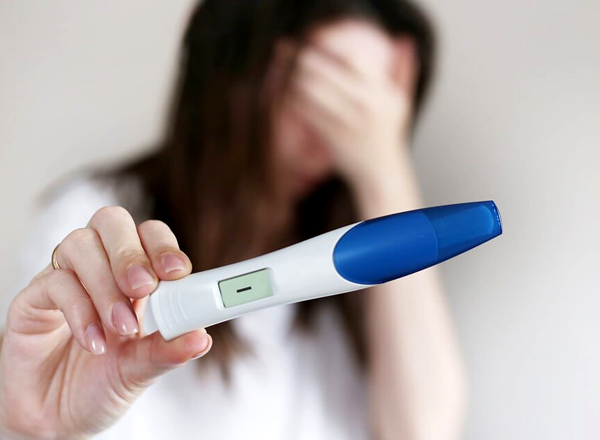
Female infertility refers to a woman's inability to conceive after a year of regular unprotected intercourse. It can result from various factors that affect the reproductive system, hormonal balance, or overall health. Here are some common causes and factors associated with female infertility:
-
Ovulation Disorders:
-
Polycystic Ovary Syndrome (PCOS): An endocrine disorder that can lead to irregular ovulation or anovulation (lack of ovulation).
-
Hypothalamic Dysfunction: Problems with the hypothalamus can disrupt the hormonal signals needed for ovulation.
-
-
Fallopian Tube Issues:
-
Blocked Fallopian Tubes: Obstruction or damage to the fallopian tubes can prevent the egg from meeting the sperm.
-
Pelvic Inflammatory Disease (PID): Infections, often sexually transmitted, can cause inflammation and scarring in the reproductive organs.
-
-
Uterine Factors:
-
Uterine Fibroids: Noncancerous growths in the uterus that can interfere with implantation.
-
Uterine Polyps: Overgrowths of the uterine lining that can affect fertility.
-
-
Endometriosis: A condition where tissue similar to the lining of the uterus grows outside the uterus, potentially causing scarring and affecting fertility.
-
Age-Related Factors: Fertility declines with age, and advanced maternal age can impact egg quality and quantity.
-
Hormonal Imbalances:
-
Thyroid Disorders: Imbalances in thyroid hormones can affect fertility.
-
Hyperprolactinemia: Elevated levels of the hormone prolactin can disrupt ovulation.
-
-
Pelvic Adhesions: Scar tissue formation in the pelvic area, often as a result of surgery or infection, can interfere with the normal functioning of reproductive organs.
-
Cervical Factors: Abnormalities in the cervix, such as the presence of hostile cervical mucus, can impede the passage of sperm.
-
Lifestyle Factors:
-
Smoking: Tobacco use can reduce fertility and increase the risk of miscarriage.
-
Alcohol and Drug Use: Excessive alcohol consumption and certain drugs can impact fertility.
-
Obesity: Being overweight can affect hormonal balance and ovulation.
-
Diagnosis and Treatment: Diagnosing female infertility involves a comprehensive evaluation, including medical history, physical examination, imaging studies, hormonal testing, and sometimes minimally invasive procedures like hysterosalpingography (HSG) or laparoscopy.
Treatment options may include lifestyle modifications, medications to stimulate ovulation, surgical procedures to address structural issues, or assisted reproductive technologies (ART) such as in vitro fertilization (IVF).
Couples experiencing difficulty conceiving are encouraged to seek the guidance of a reproductive specialist for a thorough assessment and personalized treatment plan based on the specific diagnosis.
